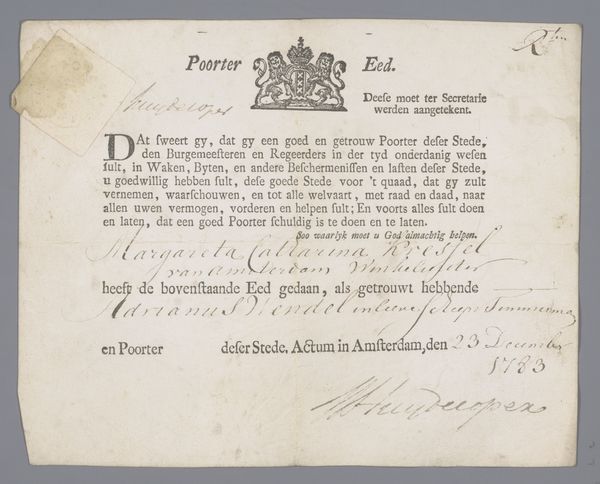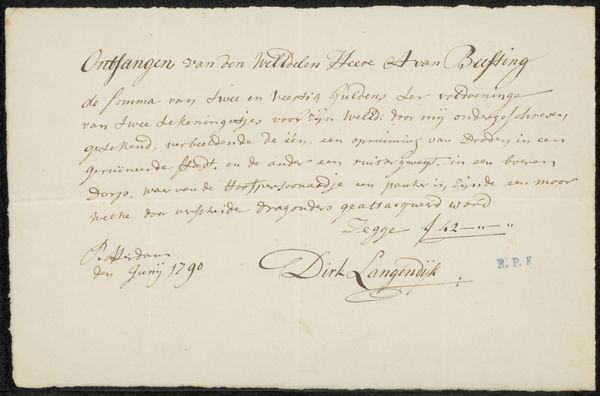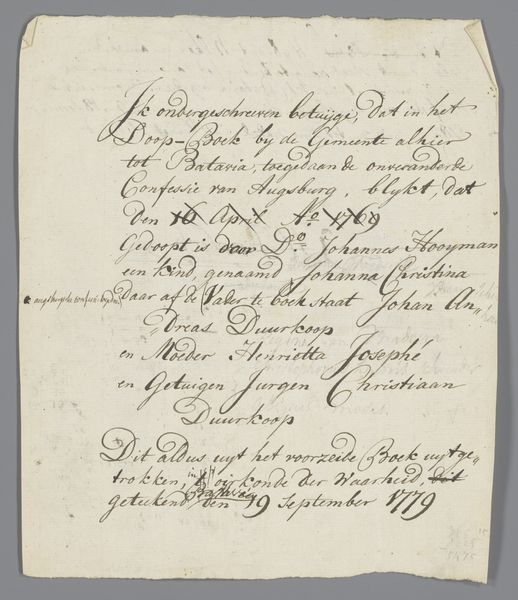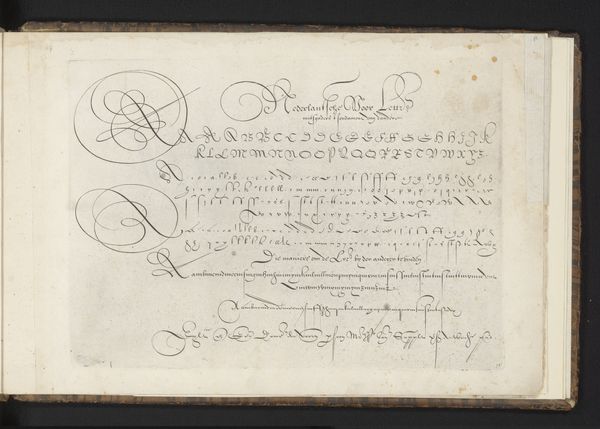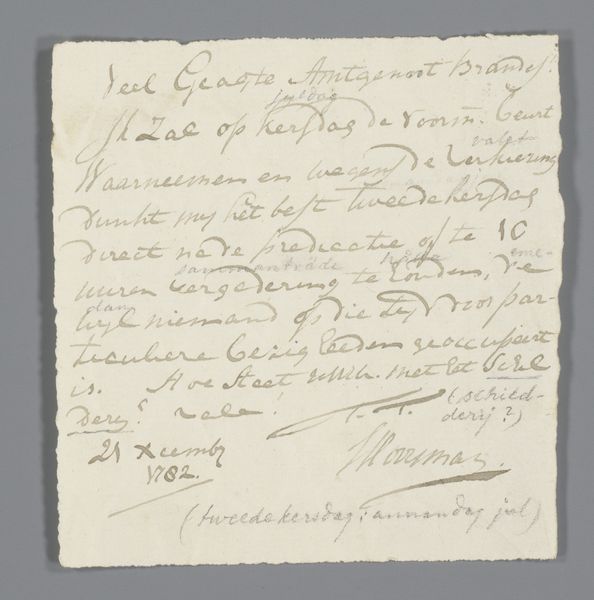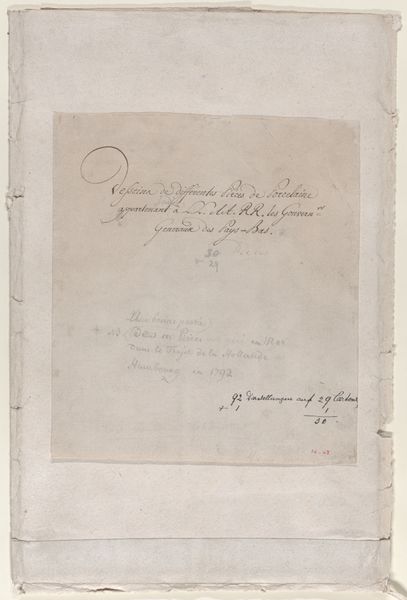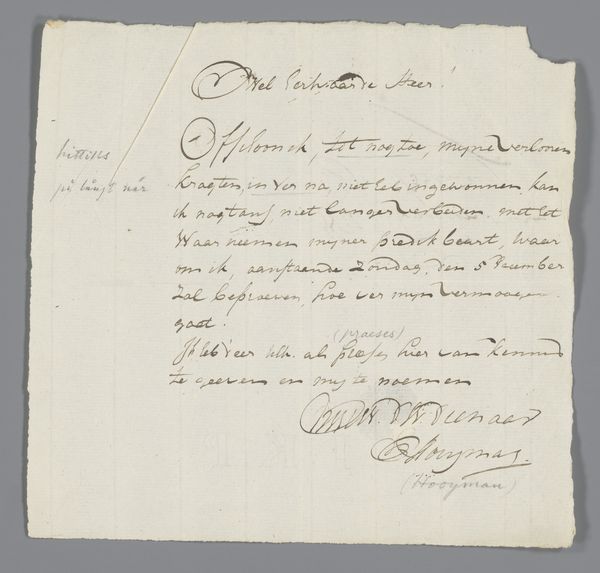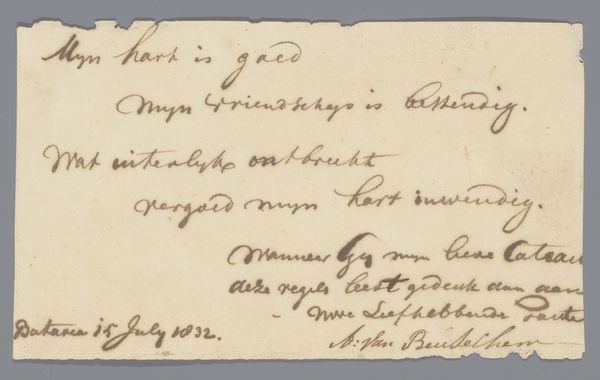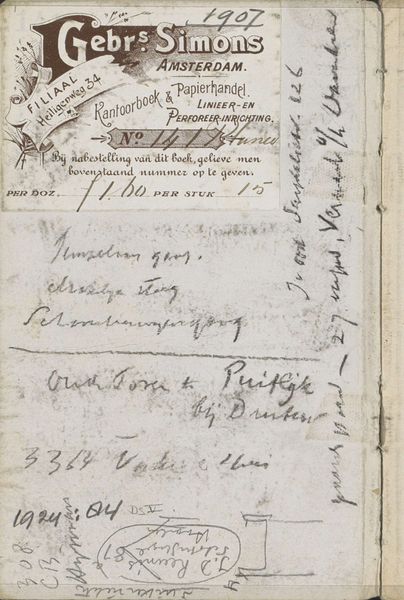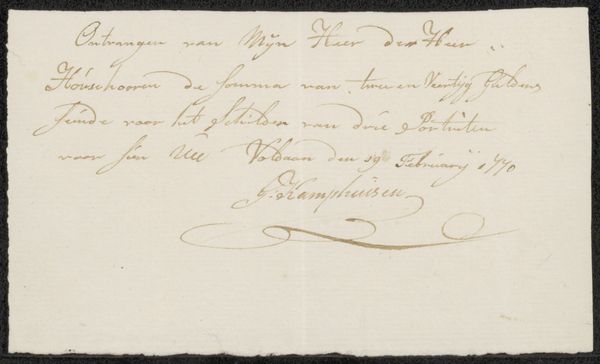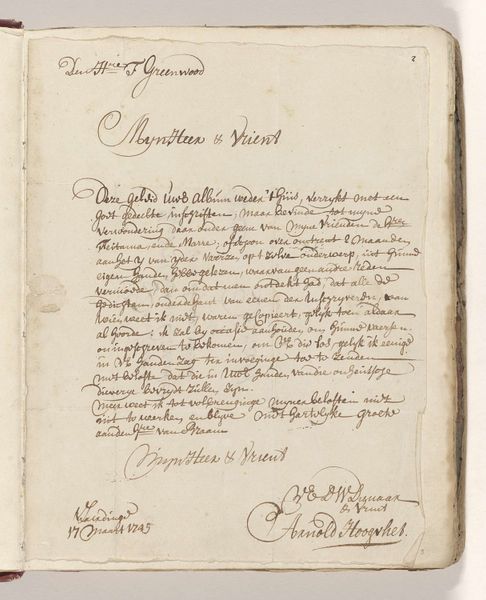
drawing, graphic-art, print, paper, ink
#
drawing
#
graphic-art
#
aged paper
#
homemade paper
#
neoclassicism
# print
#
sketch book
#
hand drawn type
#
paper
#
personal sketchbook
#
ink
#
journal
#
fading type
#
sketchbook drawing
#
storyboard and sketchbook work
#
sketchbook art
#
calligraphy
Dimensions: length 16 cm, width 18.5 cm
Copyright: Rijks Museum: Open Domain
This handwritten document from 1817, created in the Netherlands, records the wages paid to J.C.J. van Speyk, an orphan in the Burger Weeshuis, for his labor. The Burger Weeshuis, or Municipal Orphanage, was not just a place of shelter. It was a social institution that shaped the lives of countless children. This document provides a glimpse into the economic realities and labor practices surrounding the orphanage. The text specifies the amount paid per day and indicates that it was in accordance with an agreement. We see the orphanage acting as a wage regulator and labor broker. This document offers insight into the social hierarchies and economic conditions of early 19th-century Netherlands. It’s a reminder that even seemingly mundane objects can serve as valuable sources for understanding the past. To get a full picture, one might consult the orphanage's records or research the prevailing wage rates of the time. Art history benefits from interdisciplinary approaches and awareness of institutional power.
Comments
No comments
Be the first to comment and join the conversation on the ultimate creative platform.
